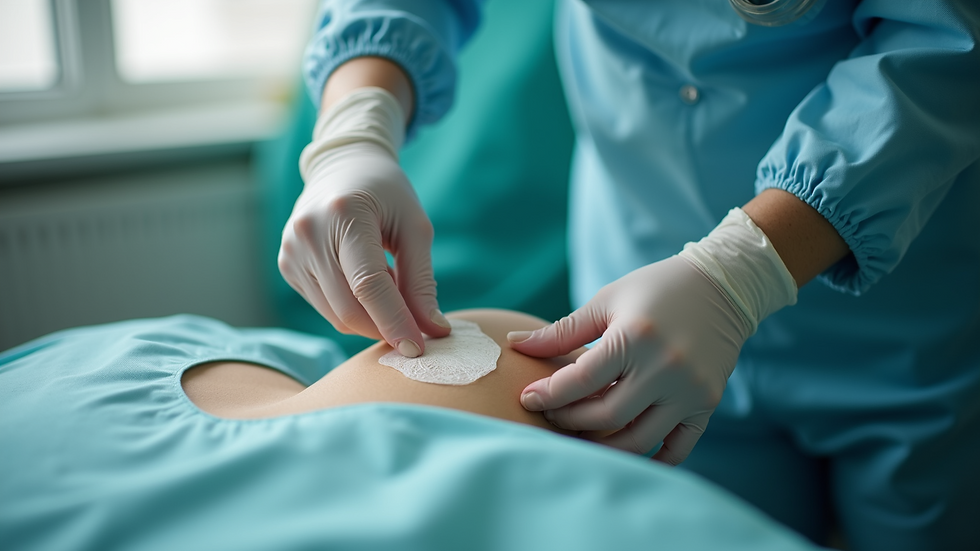Preventing Infections in Wounds: Essential Tips
- Don Gentry
- Sep 29
- 4 min read
When you have a wound, whether it’s a small cut or a more serious injury, your body begins a natural healing process. But wounds can sometimes become infected, which slows healing and can lead to complications. I want to share some clear, practical advice to help you avoid wound infections and support your recovery. Taking the right steps early on can make a big difference in how quickly and safely your wound heals.
Understanding How to Avoid Wound Infections
Avoiding wound infections starts with knowing what causes them. Bacteria, viruses, and fungi can enter the body through broken skin. When these germs multiply in the wound, they cause redness, swelling, pain, and sometimes pus. If left untreated, infections can spread and become serious.
You can protect your wound by keeping it clean and covered. This creates a barrier against germs and helps your body focus on healing. It’s also important to watch for signs of infection so you can act quickly if needed.
Here are some simple but effective ways to avoid wound infections:
Clean the wound gently but thoroughly with mild soap and water.
Apply an antibiotic ointment if recommended by your healthcare provider.
Cover the wound with a sterile bandage to keep out dirt and bacteria.
Change the dressing regularly, especially if it becomes wet or dirty.
Avoid touching the wound with unwashed hands.
By following these steps, you create a safer environment for healing and reduce the risk of infection.

Practical Tips to Avoid Wound Infections at Home
Taking care of wounds at home can feel overwhelming, but it doesn’t have to be complicated. Here are some practical tips you can use every day:
Wash your hands before and after touching the wound. This simple habit prevents germs from spreading.
Use clean supplies. Always use fresh gauze, bandages, and clean scissors if you need to trim dressings.
Keep the wound moist but not wet. A slightly moist environment helps skin cells grow, but too much moisture can cause skin breakdown.
Avoid soaking the wound in water. Baths, swimming pools, and hot tubs can introduce bacteria.
Wear loose, breathable clothing over the wound to avoid irritation.
Eat a balanced diet rich in vitamins and protein. Good nutrition supports your immune system and tissue repair.
Stay hydrated. Drinking enough water helps your body heal faster.
If you notice increased redness, warmth, swelling, or pain around the wound, or if you see pus or a bad smell, contact your healthcare provider immediately. These are signs that the wound may be infected.

What are the Four Ways to Prevent Infection?
There are four key ways to prevent infection in wounds that I always emphasize:
Cleanliness - Keeping the wound and surrounding skin clean is the first defense.
Protection - Covering the wound with a sterile dressing protects it from germs.
Monitoring - Regularly checking the wound for signs of infection helps catch problems early.
Prompt Treatment - If infection is suspected, seeking medical care quickly can prevent complications.
Each of these steps works together to create a safe healing environment. You don’t have to do everything perfectly, but consistent care makes a big difference.
When to Seek Professional Wound Care
Sometimes wounds need more than home care. If you have a chronic wound, such as a diabetic ulcer or pressure sore, or if your wound is large, deep, or not healing, professional care is essential. Healthcare providers can offer advanced treatments like specialized dressings, antibiotics, or debridement (removal of dead tissue).
You might be in a hospital, nursing home, assisted living facility, or at home with visiting nurses. Wherever you are, don’t hesitate to ask for help. Early intervention can prevent serious infections and improve healing outcomes.
Remember, you can always visit resources like this blog to prevent wound infection for more information and support.

Supporting Your Body’s Healing Process
Healing is a team effort between you and your body. Along with wound care, supporting your overall health is important. Here are some ways to help your body heal:
Get enough rest. Sleep helps your immune system fight infection.
Manage chronic conditions. Conditions like diabetes can slow healing, so keep them under control.
Avoid smoking and alcohol. These can impair blood flow and delay recovery.
Stay active within your limits. Gentle movement improves circulation and promotes healing.
By taking care of yourself, you give your wound the best chance to heal quickly and without infection.
Taking the Next Step in Wound Care
Wound care can feel challenging, but you are not alone. With the right knowledge and support, you can avoid wound infections and promote healing. Remember to keep wounds clean, protected, and monitored. Don’t hesitate to reach out for professional care when needed.
If you want to learn more about how to care for wounds and prevent complications, check out helpful resources and expert advice. Your health and comfort matter, and every step you take toward proper wound care is a step toward recovery.
Stay safe, stay informed, and take good care of yourself.




Comments